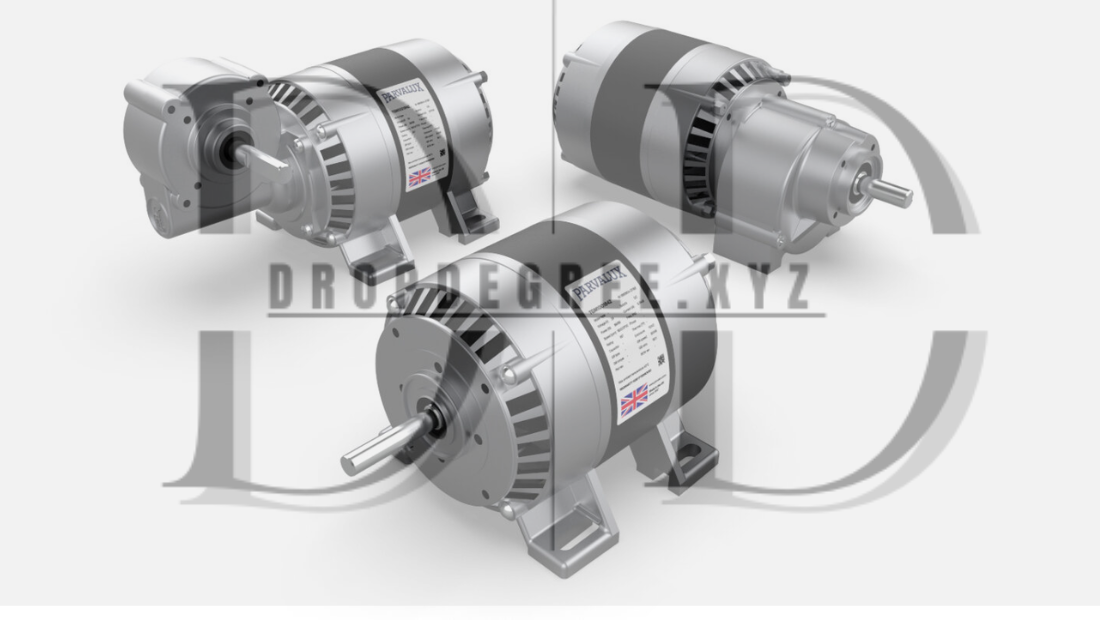Choosing the right motor for your application can greatly impact efficiency, performance, and longevity. Understanding the nuances of electric motor selection ensures that your system operates seamlessly while avoiding unnecessary costs or failures. This guide explores the key factors, types, and considerations to help you make informed decisions.
1. Understanding the Role of Electric Motors in Modern Applications
Electric motors power a vast range of devices, from industrial machinery to home appliances. Selecting the right motor begins with understanding your application’s specific needs.
Common Uses of Electric Motors
- Industrial Applications: Conveyor systems, pumps, compressors, and manufacturing equipment rely on motors for precision and power.
- Home and Commercial Appliances: Refrigerators, HVAC systems, and washing machines use smaller, efficient motors.
- Automotive Systems: Electric vehicles and power tools demand specialized motors for optimal performance.
This variety highlights the importance of tailoring motor choices to specific tasks.
2. Types of Electric Motors and Their Best Applications
Choosing the right motor starts with knowing the available types and their unique strengths.
Types of Motors
- AC Motors: Ideal for consistent speed applications like fans, blowers, and conveyor systems.
- DC Motors: Provide better control over speed and torque, making them suitable for robotics and electric vehicles.
- Servo Motors: Perfect for precise positioning in CNC machines and robotics.
- Step Motors: Best for incremental movements, often used in 3D printers and automation systems.
Each type offers distinct benefits, making it essential to align motor characteristics with your operational needs.
3. Key Factors to Consider During Electric Motor Selection
The right motor depends on several critical factors that align with your application’s demands.
Power and Performance Requirements
- Torque: Ensure the motor delivers sufficient force for your application, especially for heavy-duty tasks.
- Speed: Match the motor’s RPM range with your system’s operating speed.
- Load Type: Consider whether the load is constant, variable, or starts and stops frequently.
Environmental Conditions
- Temperature: Choose motors with heat-resistant materials if operating in high-temperature environments.
- Moisture and Dust: Opt for sealed or rugged designs for outdoor or harsh settings.
- Vibration and Noise: Applications requiring minimal disturbance should use motors designed for quiet and stable operation.
Power Source Compatibility
- Voltage and Frequency: Ensure compatibility with your existing power supply, whether it’s single-phase, three-phase, or DC.
- Energy Efficiency: High-efficiency motors reduce operational costs and comply with environmental standards.

4. Sizing Matters: Why Proper Motor Sizing Is Critical
Incorrect sizing leads to inefficiencies, higher costs, and potential equipment failure.
Importance of Proper Sizing
- Undersized Motors: May overheat or fail under heavy loads, reducing lifespan.
- Oversized Motors: Consume unnecessary energy, increasing operational costs.
- Right-Sized Motors: Balance performance, efficiency, and cost for optimal results.
Utilize load calculations and simulation tools to find the perfect motor size for your application.
5. Motor Efficiency: Saving Energy and Costs
Efficiency is a crucial consideration, especially for systems operating continuously or under high loads.
Efficiency Standards
- IE3 Motors: High-efficiency models that meet global energy regulations.
- Variable Frequency Drives (VFDs): Enhance motor efficiency by adjusting speed to match load demands.
- Permanent Magnet Motors: Offer greater efficiency for specific applications like HVAC systems.
Choosing an efficient motor reduces energy consumption, lowers operating costs, and minimizes your environmental impact.
6. The Role of Control Systems in Motor Performance
Modern electric motors often integrate advanced control systems to enhance precision and adaptability.
Control Options
- Direct-On-Line (DOL) Starters: Simple and cost-effective for low-power applications.
- Soft Starters: Reduce mechanical stress during startup, extending motor lifespan.
- Inverter Drives: Provide precise control over speed and torque, ideal for dynamic environments.
Investing in the right control system ensures smoother operation and extended motor life.
7. Common Mistakes to Avoid in Electric Motor Selection
Errors in choosing a motor can lead to inefficiencies and unexpected costs.
Mistakes to Watch For
- Ignoring Load Variations: Failing to account for fluctuating loads can cause overheating or inefficiency.
- Overlooking Environmental Factors: Motors unsuitable for their environment risk frequent breakdowns.
- Disregarding Maintenance Needs: Complex or poorly accessible motors may incur higher maintenance costs.
Avoid these pitfalls by thoroughly assessing application demands and environmental conditions.
8. Emerging Trends in Electric Motor Technology
The future of electric motors is shaped by innovations in materials, designs, and digital technologies.
Trends to Watch
- Smart Motors: IoT-enabled motors provide real-time performance data, improving predictive maintenance.
- Lightweight Materials: Advanced composites reduce weight while maintaining durability.
- Renewable Integration: Motors designed for solar and wind energy systems drive sustainable operations.
Keeping up with these trends ensures your motor selection remains future-proof.
9. Partnering with Experts for the Best Motor Solutions
Working with experienced suppliers or consultants can simplify the selection process.
Benefits of Expert Guidance
- Tailored Recommendations: Professionals can match motors to specific requirements.
- Access to Latest Innovations: Trusted suppliers often provide the latest motor technologies.
- Comprehensive Support: From installation to maintenance, experts ensure smooth implementation.
Choose reputable partners to maximize your investment in motor systems.
10. Final Steps to Make the Right Choice
Choosing the right motor involves a combination of research, calculations, and expert advice.
Steps for Success
- Define Your Requirements: Identify torque, speed, and power needs.
- Evaluate Environmental Factors: Consider temperature, dust, and moisture levels.
- Compare Efficiency Levels: Look for motors with high energy ratings and certifications.
- Consult Experts: Seek professional advice to confirm your decision.
Following these steps ensures that your motor choice aligns perfectly with your application’s demands.
Final Thoughts
Making informed decisions in electric motor selection can significantly enhance the performance, efficiency, and reliability of your systems. By understanding motor types, evaluating critical factors, and leveraging emerging technologies, you can choose a solution that meets both current and future needs.
Invest in the right motor today to power your applications with confidence and precision.
